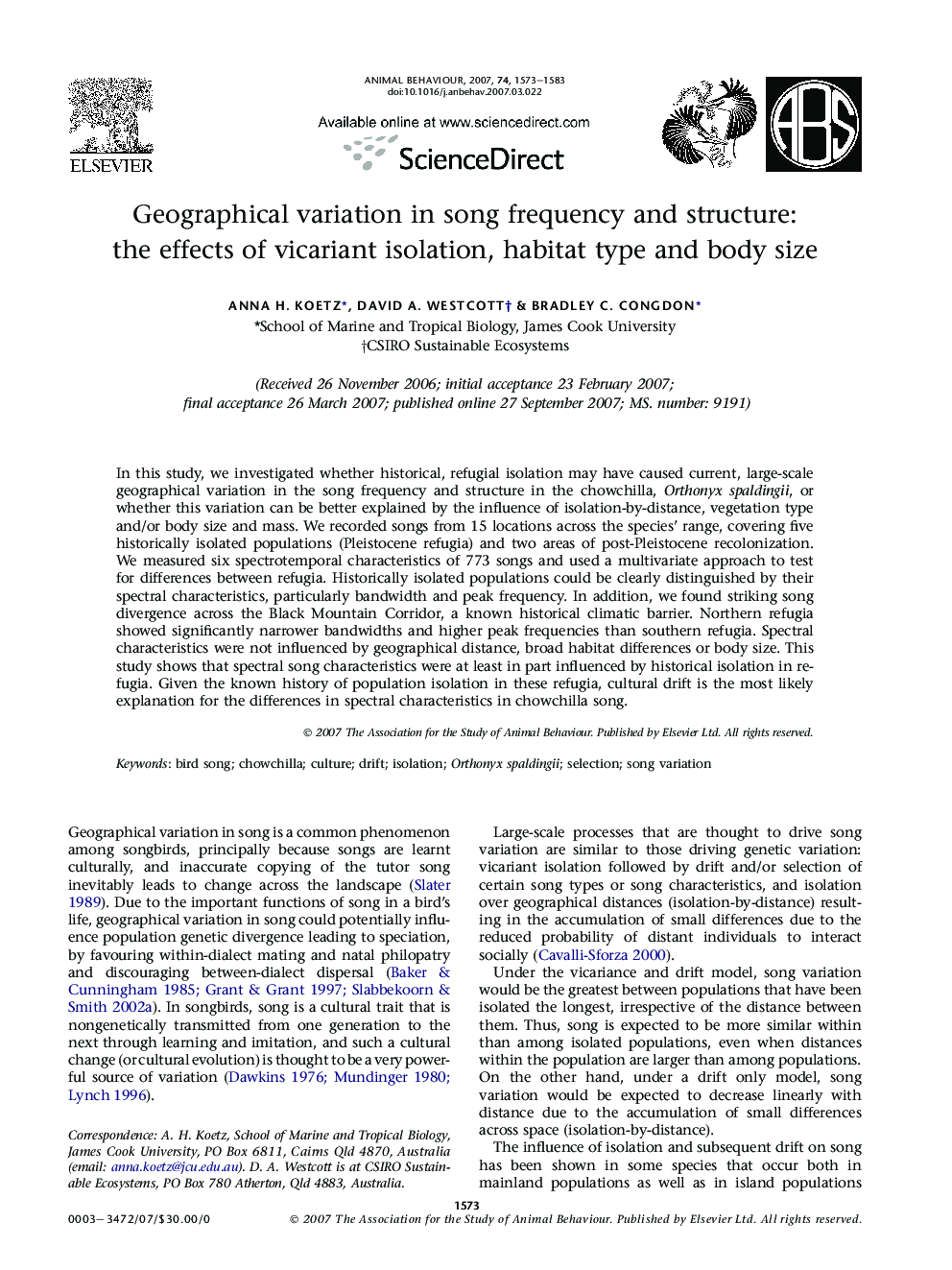| Article ID | Journal | Published Year | Pages | File Type |
|---|---|---|---|---|
| 2418312 | Animal Behaviour | 2007 | 11 Pages |
In this study, we investigated whether historical, refugial isolation may have caused current, large-scale geographical variation in the song frequency and structure in the chowchilla, Orthonyx spaldingii, or whether this variation can be better explained by the influence of isolation-by-distance, vegetation type and/or body size and mass. We recorded songs from 15 locations across the species' range, covering five historically isolated populations (Pleistocene refugia) and two areas of post-Pleistocene recolonization. We measured six spectrotemporal characteristics of 773 songs and used a multivariate approach to test for differences between refugia. Historically isolated populations could be clearly distinguished by their spectral characteristics, particularly bandwidth and peak frequency. In addition, we found striking song divergence across the Black Mountain Corridor, a known historical climatic barrier. Northern refugia showed significantly narrower bandwidths and higher peak frequencies than southern refugia. Spectral characteristics were not influenced by geographical distance, broad habitat differences or body size. This study shows that spectral song characteristics were at least in part influenced by historical isolation in refugia. Given the known history of population isolation in these refugia, cultural drift is the most likely explanation for the differences in spectral characteristics in chowchilla song.
